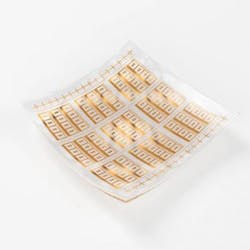Researchers Use Graphene to Detect Signals in Terahertz Band
The demand for devices and sensors operating in the terahertz band is on the rise as industries prepare for faster communications with 5th generation mobile networks (5G), better imaging in healthcare, security, and materials diagnostics, and millimeter waves harnessed for short-range communications between IoT devices and short-range scanning.
Scientists from Chalmers University of Technology in Gothenburg, Sweden are highlighted as the first team to transmit terahertz frequencies using graphene--an atom-thin sheet of carbon atoms with a hexagonal lattice structure. Traditional materials for solid-state devices like silicon tend to dissipate energy as heat at higher frequencies due to physical limitations of their lattice structure. But thanks to its high carrier mobility, graphene can transmit electrons effectively at very fast rates.
The team’s most recent work is published in the journal Applied Physics Letters. It investigates the use of graphene-based field effect transistors (GFETs) on a flexible polyethylene terephthalate (PET) substrate. The substrate was chosen because its dielectric properties minimally interfere with graphene’s electrical performance. In addition, its strength and flexibility are similar to graphene’s, allowing bending of the device with minimal effects on its signal-to-noise ratio and voltage characteristics. The team's next research phase will involve integration of the GFETs on a dielectric graphene substrate. This will enable even better electrical characteristics on a thinner, flexible graphene sheet.
At room temperature, the device detects signals between 330 to 500 gigahertz—a spectrum that can be applied with terahertz cameras, sensing and diagnostics in high-periodicity materials, and even skin-cancer detection. It can be bent into many shapes for new capabilities in scanning of uneven surfaces and integration into electronics with more complex designs.
Learn more about the graphene detector's capabilities in the video below:
The research was funded by the EU Graphene Flagship, the Swedish Foundation for Strategic Research (SSF), and the Knut and Alice Wallenberg Foundation (KAW). The team will continue to research designs for their flexible graphene device so that it may one day be used for real-world applications.
About the Author
Leah Scully
Associate Content Producer
Leah Scully is a graduate of The College of New Jersey. She has a BS degree in Biomedical Engineering with a mechanical specialization. Leah is responsible for Machine Design’s news items that cover industry trends, research, and applied science and engineering, along with product galleries. Visit her on Facebook, or view her profile on LinkedIn.

